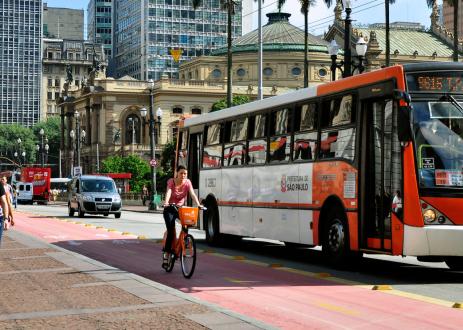Assessing the Viability of Using Autorickshaws for Urban Freight Delivery in India
The paper assesses the viability of dual utilization of autorickshaws for commercial deliveries in urban India. The paper indicates that dual utility can not only overcome supply gaps in the freight ecosystem but also provide an additional source of income to autorickshaw drivers.
The paper assesses the viability of dual utilization of autorickshaws for commercial deliveries in urban India. WRI India conducted primary surveys in five cities — Bengaluru, Delhi, Hyderabad, Lucknow and Pune — with business owners, retailers, dealers, distributors and drivers, among others.
Key Findings:
- The analysis suggests that dual utilization of autorickshaws can increase driver income by 15 percent
- It can reduce the cost of logistics for Micro, Small & Medium Enterprises (MSMEs).
- The research also indicates that optimum utilization of passenger autorickshaws for freight could potentially reduce CO2 emissions by 51.5 percent on every trip.
Executive Summary:
It is estimated that, between 2020 and 2030, India’s freight activity will increase fivefold, and this imminent demand needs to be accommodated cost-effectively. Factors such as increased penetration of smartphones and easy access to e-commerce platforms have led to drastic changes in consumer behavior. The government is focused on improving last-mile delivery and urban logistics efficiency while reducing congestion and enabling accelerated economic growth. To accomplish this, it may need to explore and optimize new types of micromobility-based last-mile freight modes; low-emissions cargo transportation, especially for smaller payloads; and ways to optimize use of existing vehicle stocks. As an integral part of urban transportation, autorickshaws can bridge the gap in medium to last-mile connectivity in urban and peri-urban areas. Motorized three-wheeler passenger autorickshaws, considered “intermediate public transport” in India, are more flexible and maneuverable than four-wheeler cargo vehicles; they can navigate the congested roads in cities easily, while also having higher payload capacity for carrying freight than two-wheelers. Dual use of autorickshaws to carry cargo will give drivers an additional source of income and help overcome supply gaps in the freight ecosystem. While regulations of the Motor Vehicles Act (MVA) of 1988 prohibit transportation of goods in contract carriage like that provided by autorickshaws, unregulated dual use of autorickshaws is already common in India. Amendments to the MVA in 2019 give the central government discretionary powers to develop a national transportation policy in concurrence with state governments, and to exempt specific categories of vehicles from older regulations. This could help nurture innovative applications in mobility and pave the way for formally regularizing dual use of autorickshaws. As prior research on this subject is lacking, this study explores potential demand for dual use of autorickshaws, the usefulness of such a strategy, the legal implications, and operational constraints that could arise.
Image by Vaishali Bhatia/MetroRide
Projects

Electric Mobility
Visit ProjectIncreasing access to electric vehicles and charging infrastructure, and optimizing to reduce emissions.
Part of Cities
Urban Mobility
Visit ProjectImproving quality of life, health and opportunity in cities through sustainable and safe transport and urban design.
Part of Cities
